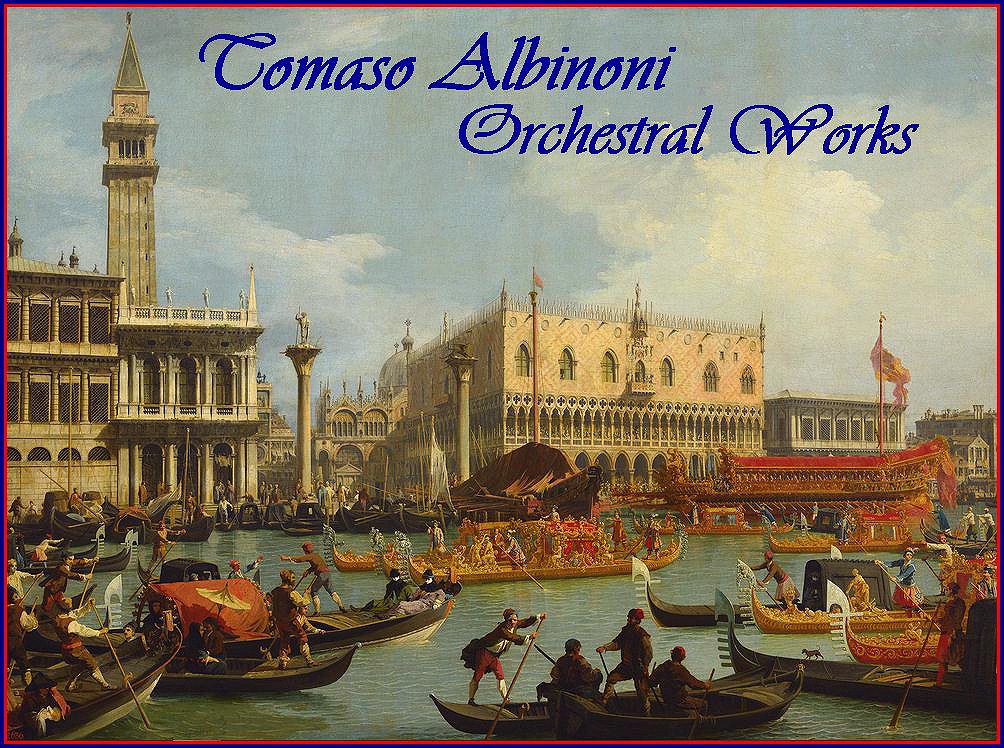 |
|
Tomaso ALBINONI (1671–1751)
The Modena Chamber Orchestra
1: Sinfonia ("Sonata") a Cinque in g minor – Op. 2, No. 6
Total time 73:04
|
Tomaso Giovanni Albinoni was born in Venice in 1671, eldest son of a wealthy paper merchant. At an early age he became proficient as a singer and, more notably, as a violinist, though not being a member of the performers' guild he was unable to play publicly so he turned his hand to composition.
A lifelong resident of Venice, Albnoni married an opera singer, Margherita Raimondi, and composed as many as 81 operas several of which were performed in northern Europe from the 1720s onwards. Most of his operatic works have been lost, having not been published during his lifetime. Nine collections of instrumental works were however published, meeting with considerable success and consequent reprints; thus it is as a composer of instrumental music (99 sonatas, 59 concertos and 9 sinfonias) that he is known today. In his lifetime these works were favorably compared with those of Corelli and Vivaldi, and his nine collections published in Italy, Amsterdam and London were either dedicated to or sponsored by an impressive list of southern European nobility. Albinoni was particularly fond of the oboe, a relatively new introduction in Italy, and is credited with being the first Italian to compose oboe concertos (Op. 7, 1715). Prior to Op.7, Albinoni had not published any compositions with parts for wind instruments. The concerto, in particular, had been regarded as the province of stringed instruments. It is likely that the first concertos featuring a solo oboe appeared from German composers such as Telemann or Handel. Nevertheless, the four concertos with one oboe (Nos. 3, 6, 9 and 12) and the four with two oboes (Nos. 2, 5, 8 and 11) in Albinoni's Op.7 were the first of their kind to be published, and proved so successful that the composer repeated the formula in Op.9 (1722). We have selected a variety of Albinoni's best instrumental works from several different collections, featuring strings, oboes, and an oboe concerto here performed on the trumpet, as was often done in baroque times. Altogether a very enjoyable and varied program, which we conclude with the celebrated Adagio. In 1945, Remo Giazotto, a Milanese musicologist travelled to Dresden to complete his biography of Albinoni and his listing of Albinoni's music. Among the ruins, he discovered a fragment of manuscript. Only the bass line and six bars of melody had survived, possibly from the slow movement of a Trio Sonata or Sonata da Chiesa. It was from this fragment that Giazotto reconstructed the now–famous Adagio, a piece which is instantly associated with Albinoni today, yet which ironically Albinoni would doubtless hardly recognize. One might like to consider that the somewhat soulful character of the melody may perhaps have reflected Giazotto's feelings as he contemplated the almost total destruction of this once glorious city.
Albinoni died in 1751, in the city of his birth.
|